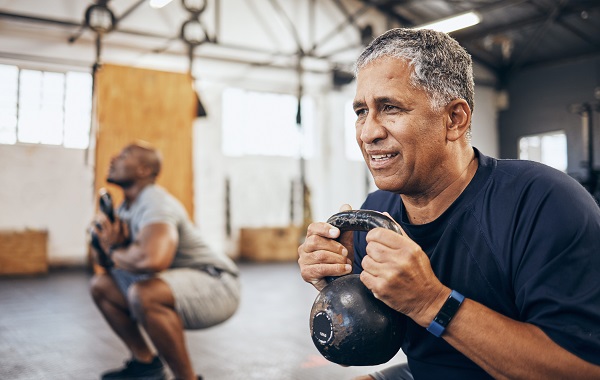Step Away From That Rocking Chair!

The old cliché is that older adults should take it easy—maybe even take to their rocking chairs. Today, we know how wrong that is!
“It’s a widespread idea in Western societies that as we get older, it’s normal to slow down, do less, and retire,” said Harvard evolutionary biologist Daniel E. Lieberman. In fact, he said, the reverse is true. Our hunter-gather ancestors were quite active. “As we get older, it becomes even more important to stay physically active.”
Why does exercise help our species live longer?
Physical activity helps us burn calories rather than storing unhealthy extra fat. And physical activity strengthens the body at the molecular, cellular and tissue levels. “This includes repairing tears in muscle fibers, repairing cartilage damage, and healing microfractures. The response also causes the release of exercise-related antioxidants and anti-inflammatories, and enhances blood flow,” Lieberman’s research team reported. “The cellular and DNA repair processes have been shown to lower the risk of diabetes, obesity, cancer, osteoporosis, Alzheimer’s, and depression.”
Lieberman reports that as technology replaces a lot of the work people used to do, many humans are less active these days. But even if our daily tasks don’t require us to be active, we still need to be.
Exercise for everyone
Resistance to exercise is something most of us have to overcome. A lifetime of physical activity lowers our risk of many health problems, and of premature death. If you’ve always been active, take a bow! But it’s never too late to add more physical activity to your life. Ask your doctor for a “prescription” for appropriate activities, tailored for your health conditions. An exercise prescription for older adults will typically include:
Aerobic activity, which increases heart rate and breathing, bringing more oxygen to the body (for example: walking, dancing).
Muscle strengthening and flexibility exercise that keeps muscles and ligaments strong (for example: stretching, lifting weights).
Balance training, to prevent falls and enhance confidence in exercising (for example: balance classes, tai chi).
Exercise classes tailored for older adults are available at senior centers, health clubs, local parks and recreation departments, and online. Many senior living communities have fitness programs. Exercise need not be formal. Just going for a walk, working in the garden or even house cleaning provides a good dose of activity. So step away from the rocker and get moving!
Source: IlluminAge AgeWise with information from Harvard University
The information in this article is not intended to replace the advice of your healthcare provider. Ask your doctor for an exercise program that’s right for you.

